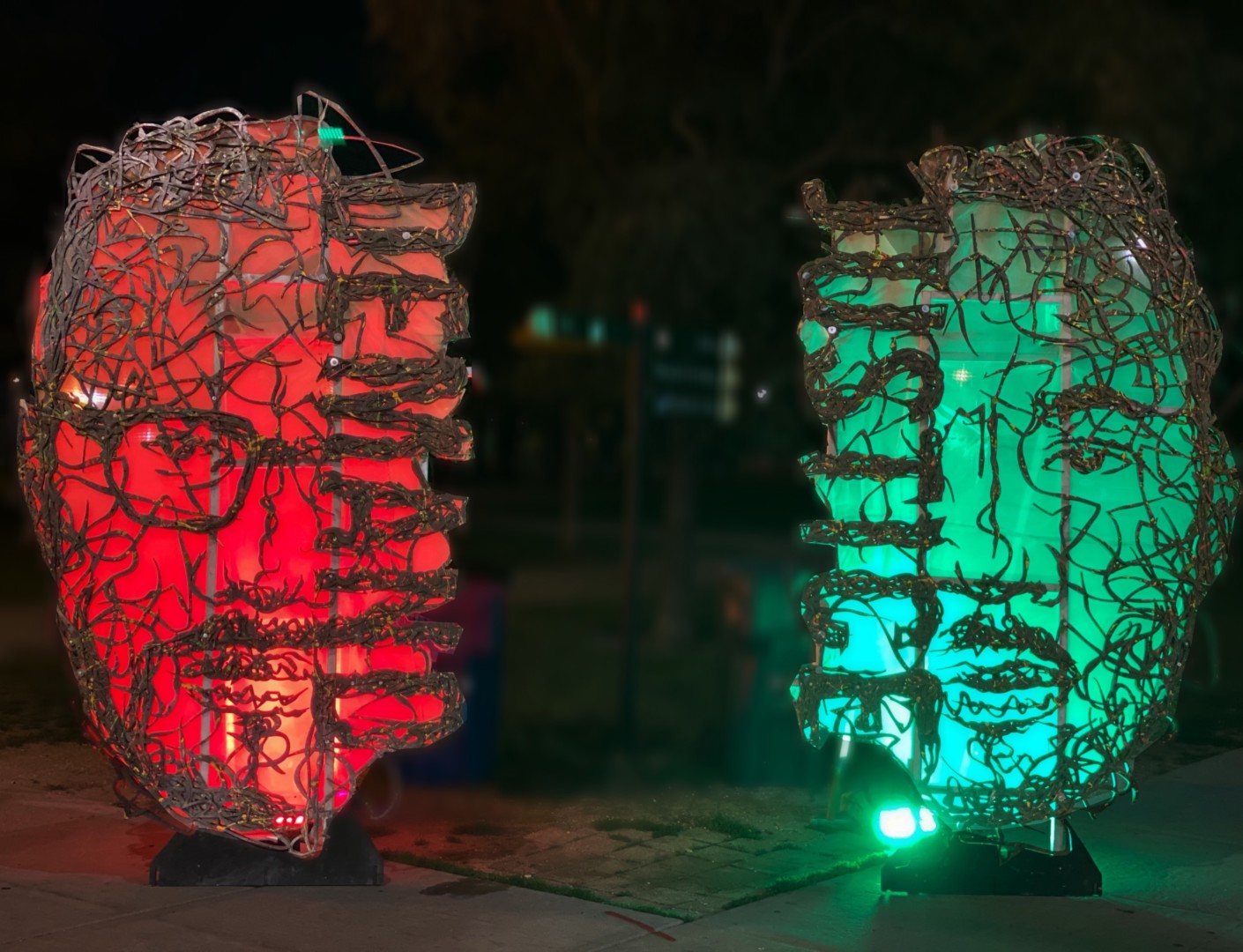If police claim to support peaceful protest, then why do they so often treat it with blatant hostility?
Yesterday news circulated that as far as the state of Kentucky is concerned, no one will be held accountable for the murder of Breonna Taylor. The fact that her killers wore police uniforms, in the view of State Attorney General, Daniel Cameron, was enough to absolve them of the incompetence and lethal recklessness that resulted in the death of an innocent Black woman in her own home.
Protests erupted in cities all across the nation, including Chicago, where I encountered a tense scene that exemplified the best of peaceful protest in the face of an all too familiar scene of disturbingly poor policing.
A crowd began to gather around a sizable spectacle at the southwest corner of Grant Park at the busy intersection of South Michigan Avenue and Roosevelt Road. A pop-up art exhibit was on display—it was an intricate mangling of metal to form the larger-than-life faces of Malcolm X and Rev. Martin Luther King, Jr.
The unified portraits stand in cohesion and contrast—different methods but the same goal; different paths but the same destination; different freedom-fighting tactics but the same tragic outcome.
The exhibit is stunning. It is backlit by red and green lights separated by enough space to allow the night’s darkness to add black to the color scheme—a creative ode to Mother Africa. It is overt art with no ambiguity in its call to action. It is a visual representation of the sad but determined refrain of our day. The art transmits a sense of obligation. It charges you to do exactly what it says: Demand Justice.
Mesmerized by the powerful display, it took me a minute to realize that while a crowd had gathered to take photos and reflect—breaking into spontaneous conversations about this masterful piece—a Chicago police officer was busy berating the artist for his “illegal” exhibit.
I immediately noticed that the creator—who I later learned is the renowned Chicago artist Maxwell Emcays—remained calm and collected as the officer, with clear intent, tried to escalate the tension. But Emcays was unflappable. He was whip smart, deliberate in his words and movements, and knowledgeable about the law.
The officer’s language and tone was insulting and demeaning. He spewed easily recognizable lies about the law. At one point, the officer insisted that the artist’s improperly parked U-haul truck be moved. When a friend of Emcays tried to move it, the officer said—in front of witnesses and cameras—that it was illegal for her to drive the vehicle because her name was not on the rental agreement.
After threats of arrest, to remove and destroy the art, and to tow the truck away, the officer finally cited Emcays for the parking violation, which came with a $100 penalty. Without hesitation, I dug into my pocket and handed my newfound friend the $100 to cover the fine and encouraged him to keep standing strong.
He didn’t need me to tell him that. He’d put his art on display with passion and without permission. He refused to budge in a barrage of police harassment. It was an impressive and inspiring display of civil disobedience.
And even as Emcay’s actions were galvanizing, it was equally disheartening to see an officer make every effort to turn a peaceful situation into a confrontational one. His instinct was to see the art as a threat to his authority, and his reaction was to aggressively confront all that this threat conjured up in his head.
There was no threat. It was just beautiful art sitting on the public sidewalk, provoking conversation and peaceful action. The officer was so focused on the minutiae of an illegally parked U-Haul and an art exhibit without a proper permit that he couldn’t step back and realize the positive and healing potential of the moment.
This pop-up art was perfectly placed and timed, despite legalities. It was a peaceful and positive provocation. And it was a powerful example of what the late John Lewis meant when he coined the term “good trouble.”


